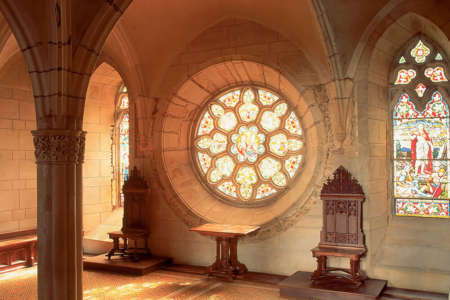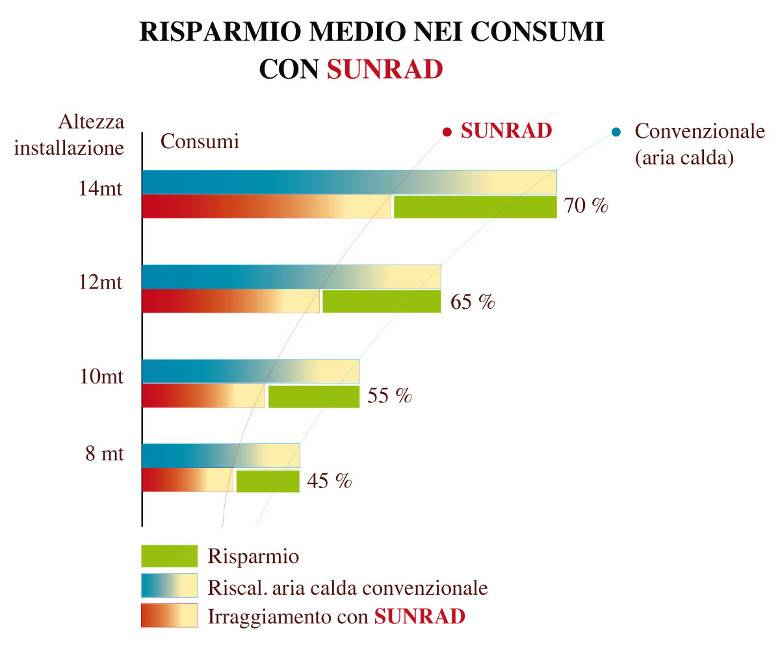MAXIMUM WELL-BEING AND RESPECT FOR SACRED AND HISTORICAL SITES
Radiant heating for places of worship
Among all types of buildings, places of worship represent the most challenging projects with the most specific needs, given their historical and aesthetic constraints that discourage invasive and overly visible installations.
These projects usually involve very high spaces, in which conventional heating would entail prohibitive consumption due to the vast volumes of air that would need to be heated. Furthermore, given the intermittent use of these facilities, thermal inertia cannot be leveraged, since these sites are not heated most of the time.


Nonetheless, the need for a comfortable environment in this case is an even more indispensable requirement due to the personal, social and meditative functions associated with these venues.
Consequently, on the one hand, heating a church requires high peaks of thermal performance, while on the other hand, careful attention must be paid in order to heat only useful areas and keep down costs.
Unsurprisingly, in recent years radiant technology has become the preferred solution for places of worship.
- While consuming less than half the amount of energy compared to conventional technologies, radiant systems make people feel toasty warm, pleasantly heating their bodies in a direct manner.
- Heat radiated even from great heights does not coalesce near the top, but drops down to man-height, where it is pleasantly perceived by the congregation.
- A radiant heating system does not take long to be activated and heats people almost instantaneously.
- By virtue of thermal efficiency, radiant systems make it possible to obtain the same personal heating sensation, while offering up to a 70% reduction in consumption compared to conventional units.
- The spot heating function of the system, which localizes areas with differing degrees of hot and cold, or even shuts off the equipment in certain areas, allows considerable savings, especially in areas where daily functions are seldom carried out. This means that it would not be cost-effective to heat the entire environment.
- Given the imposing height of churches, it would be virtually impossible to heat such a building via a technology that must first heat all the air. Radiant technology prevents air masses from accumulating in upper areas where precious heat remains unused.
- Radiant energy does not heat air, but people, focusing heat where it is needed. It is not subject to high dissipation, as is the case in hot air technologies, which are affected by openings and dispersions in upper areas.
- Radiant heating also means avoiding convective motion, which, especially in ancient buildings, can raise dust that is harmful to people and artistic artefacts. As a result, the air is kept cleaner and healthier.
- Since there is no air ventilation, a radiant appliance is also totally noise-free, a critical issue in religious sites where unbroken silence is an essential part of the personal experience.
- The installation of a radiant appliance, especially in the case of the Fraccaro models which are tailor-made for places of worship, is reduced to a minimum. This means that they are minimally invasive both structurally and in terms of aesthetics, in cases where architectural intervention is often restricted and camouflaging devices is a legal obligation.
- Both the installation and maintenance of radiant systems are reduced to a minimum, in terms of complexity and time frame, thereby cutting costs for the congregation and eliminating inconvenience in highly sensitive contexts, such as religious communities.
For the industrial sector
The industry sector requires powerful and effective heating systems, since the quality of the environment has a direct influence on people's productivity.
Residential and Tertiary
At home, as well as in the workplace, thermal comfort is a fundamental element for the quality of life and health.
For greenhouses and Iivestock breedings
Livestock breeding and greenhouses are specialized environments, with particular needs related to the presence of living organisms.
For the railway sector
The railway transport industry needs large heated spaces to ensure adequate comfort to technicians, which carry out maintenance work on the rolling stock, important to guarantee the safety of all travelers.
For places of worship
The places of worship are the most peculiar environments. Intended for moments of recollection and meeting of the community, they require optimal comfort and good functioning, taking care not to compromise the architecture of the place with invasive installations.
For the aviation industry
The aviation industry needs large hangars to store and maneuver aircraft easily. These environments need to be heated and cooled in order to guarantee the adequate comfort for the technicians.
